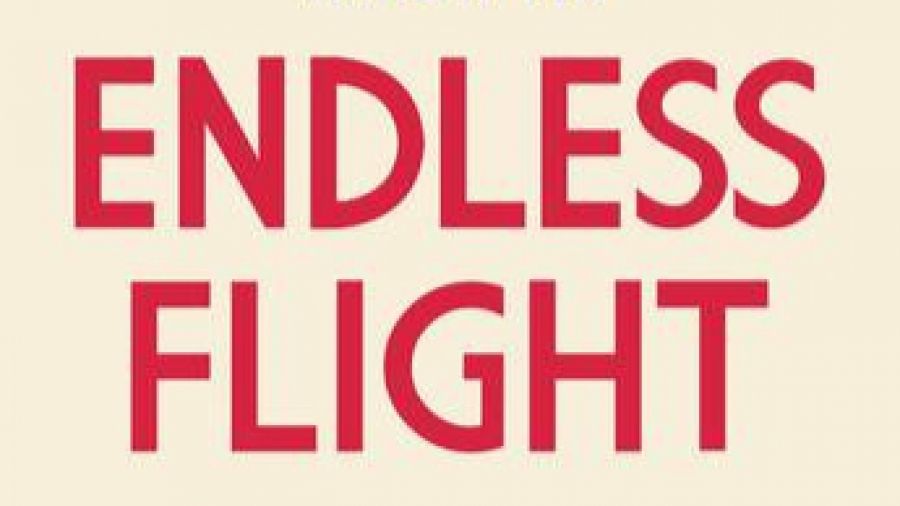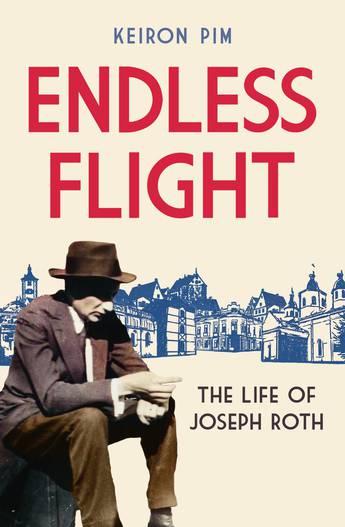
- Free Article: No
- Contents Category: Biography
- Review Article: Yes
- Article Title: A man without papers
- Article Subtitle: The first English biography of Joseph Roth
- Online Only: No
- Custom Highlight Text:
Joseph Roth (1894–1939) has been well served by translators, especially Michael Hofmann. His works are widely available and at least two are acknowledged masterpieces: Job (1930), a lyrical evocation of the fading world of the East European Jewish shtetl, and The Radetzky March (1932), Roth’s elegy for the lost Austro-Hungarian Empire. Until now there has been no English biography. Keiron Pim takes up the challenge with Endless Flight: The life of Joseph Roth. It is the product of wide-ranging scholarship, a deep immersion in Roth’s oeuvre, and travels in Ukraine, where Roth’s hometown Brody is now located. He shows us Roth as journalist and novelist ‘tracing the continent’s trajectory between the wars in prose of sublime lyricism’ and creating a voice for ‘the marginalised, the alienated and the dispossessed’.
- Featured Image (400px * 250px):

- Alt Tag (Featured Image): Joachim Redner reviews 'Endless Flight: The life of Joseph Roth' by Keiron Pim
- Book 1 Title: Endless Flight
- Book 1 Subtitle: The life of Joseph Roth
- Book 1 Biblio: Granta, $49.99 hb, 537 pp
- Book 1 Cover Small (400 x 600):

- Book 1 Cover (800 x 1200):

These are the bare facts; Pim gives us the full tragic history. He doesn’t see Roth as simply a victim of his circumstances, however. Struck by the parallels between Roth’s fractured life and the lives of his characters – the returned soldier Franz Tunda, for example, in Flight Without End (1927), who ‘was not at home in this world’ – he sees Roth’s homelessness as a psychological state and the key to his character. Following David Bronsen, author of the 1974 standard German biography, Pim argues that Roth’s identity was ‘split’ or at best ‘hyphenated’: a provincial East European Jew living the life of a cosmopolitan Viennese man of letters. Applying Sartre’s concept of ‘authenticity’, Pim decides Roth was so conflicted about his Jewishness that he felt ‘inauthentic’ as an Austrian.
It is an oddly old-fashioned approach; human identity is understood as multi-faceted nowadays. But Pim argues that Roth internalised the anti-Semitism in his environment, felt a fraud as an Austrian, blamed his Jewishness – and suffered from pathological ‘self-loathing’. Drawing on studies of ‘Jewish self-hatred’, he applies the term to Roth. The trouble with this explanation is that self-haters don’t normally display Roth’s steely self-confidence. Assured self-irony is his typical tone. In a witty letter written in June 1930 to Kiepenheuer, his publisher, Roth tells him: ‘He is the most courtly man I know. So am I. He got it from me […] He believes in me. So do I.’ Roth is not always this relaxed about his identity, but he was stubbornly convinced he was both an Austrian and a Jew. There is a simple historical explanation for his preoccupation with this question.
Before the war, ethnic minorities across the Habsburg Empire, including Roth’s Galicia, were citizens of the Dual Monarchy and therefore also ‘Austrian’. When Austria-Hungary was carved up in 1918, Roth found himself redefined as a citizen of Poland, but refused to relinquish his Austrian identity. No one was going to tell him who he was. Determined to recover his lost citizenship, he invented a Schwabian German father and acquired a fake baptism certificate. ‘A man without papers,’ he once said grimly, ‘is worth even less than papers without a man.’ He was often angry, occasionally using anti-Semitic language to express hostility to fellow Jews, but there is no evidence that he turned this anger on himself. His assimilated co-religionists were the usual target. Their snobbish disdain for Ostjuden like him drew his ire: ‘Every form of assimilation is a flight from the sad society of the persecuted.’ And he deplored their complacency in the face of rising fascism. Roth regained his Austrian citizenship in 1921, but it remained tenuous. Henceforth he lived in a state of inner exile, unable to accept the loss of the old order, deeply suspicious of the extremist politics contaminating the new.
It is true, as Pim observes, that Roth’s habit of embellishing his threatened Austrian identity became increasingly egregious; he was not above fabricating imaginary war experiences. It is also true, as Michael Hofmann comments in A Life in Letters (2012), that these small lies often expressed emotional truths. Roth did sometimes feel, like Tunda in Flight without End, that the mass graves of the unknown soldiers yawned for him. But his sadness is subtler and more self-aware than Pim allows. Self-pity quickly generates self-irony: ‘I have no home; aside from being at home in myself [...] therefore I take great care to remain within myself’ (from a letter dated 10 June 1930). He can laugh at his own pain while teasing his reader. Pim describes Roth as still ‘playing’ the old-world Austrian gent up until his death. His friends saw him rather as a man struggling to maintain his dignity in the face of the cascading indignities of exile.
Speaking for all the wanderers on God’s earth, Roth once lamented: ‘Oh – the whole world thinks in such tired, worn, traditional clichés.’ Pim might have done without the cliché of Jewish self-hatred. Nevertheless, his biography offers a wealth of insight into the tragic life of one of Europe’s greatest writers, and is more than welcome.


Comments powered by CComment